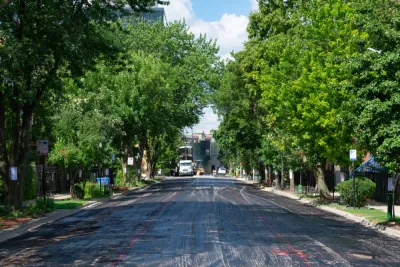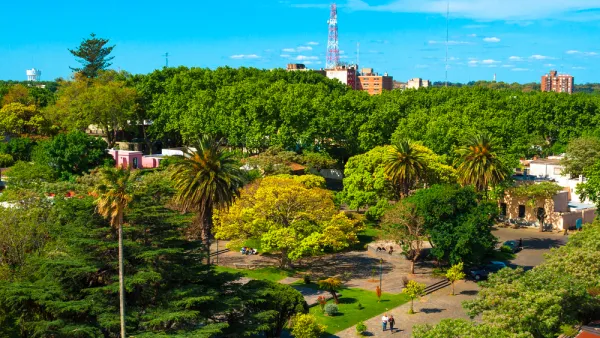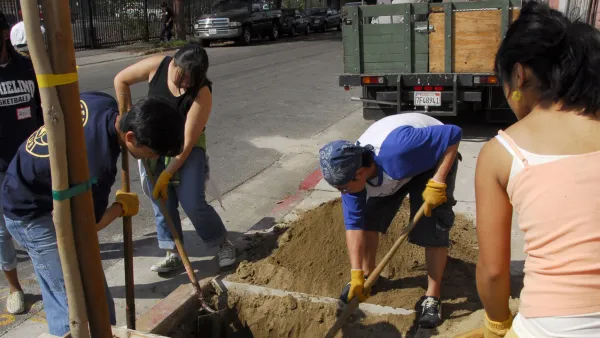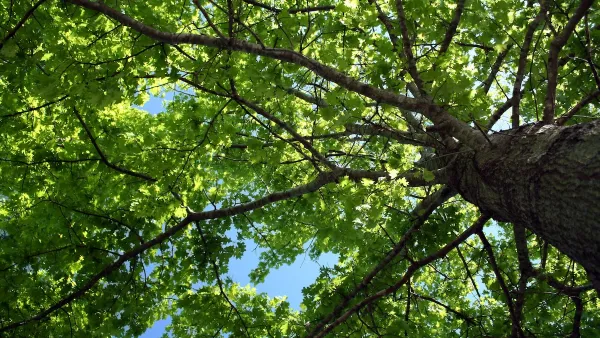An Urban Forestry Board is needed in Chicago to unsure the health and safety benefits of a flourishing urban forest.

Nara Schoenberg reported on August 14, 2020 about the devastating toll the recent derecho storm took on the urban tree canopy of Chicago.
"The Chicago region is still assessing the damage caused by a major storm Monday, but the city has received 4,000 emergency calls about tree damage, officials say, and the Forest Preserves of Cook County report that thousands of additional trees have been seriously damaged," according to Schoenberg.
Daniella Pereira, vice president for community conservation at Openlands, follows up that news with commentary calling on the city to establish an Urban Forestry Board to help the city recover and regenerate from that devastation.
Pereira notes that the city was already on pace to remove a record number trees before the storm hit: "Before the recent derecho storm, public records show removals neared 7,300 trees. Mayor Lori Lightfoot said the storm took out that same number of trees in one afternoon. That’s a total of 14,600 trees lost in 2020, with 4½ months to go." The city is now in the 11th consecutive year of removing more trees than it plants, according to Pereira.
As a solution, Pereira recommends the creation of an Urban Forestry Board tasked with "advancing better policies and practices to care for trees and coordinating city agencies that can impact the health of trees."
"It would also identify opportunities to supplement public with private funds by better coordinating efforts with nongovernment partners and volunteers that work with trees," writes Pereira.
Pereira also devotes substantial space to making the case for the benefits of trees in urban settings.
FULL STORY: Commentary: 7,300 trees lost in the storm: Just one reason Chicago needs an urban forestry board

National Parks Layoffs Will Cause Communities to Lose Billions
Thousands of essential park workers were laid off this week, just before the busy spring break season.

Retro-silient?: America’s First “Eco-burb,” The Woodlands Turns 50
A master-planned community north of Houston offers lessons on green infrastructure and resilient design, but falls short of its founder’s lofty affordability and walkability goals.

Delivering for America Plan Will Downgrade Mail Service in at Least 49.5 Percent of Zip Codes
Republican and Democrat lawmakers criticize the plan for its disproportionate negative impact on rural communities.

Test News Post 1
This is a summary

Test News Headline 46
Test for the image on the front page.

Balancing Bombs and Butterflies: How the National Guard Protects a Rare Species
The National Guard at Fort Indiantown Gap uses GIS technology and land management strategies to balance military training with conservation efforts, ensuring the survival of the rare eastern regal fritillary butterfly.
Urban Design for Planners 1: Software Tools
This six-course series explores essential urban design concepts using open source software and equips planners with the tools they need to participate fully in the urban design process.
Planning for Universal Design
Learn the tools for implementing Universal Design in planning regulations.
EMC Planning Group, Inc.
Planetizen
Planetizen
Mpact (formerly Rail~Volution)
Great Falls Development Authority, Inc.
HUDs Office of Policy Development and Research
NYU Wagner Graduate School of Public Service





























